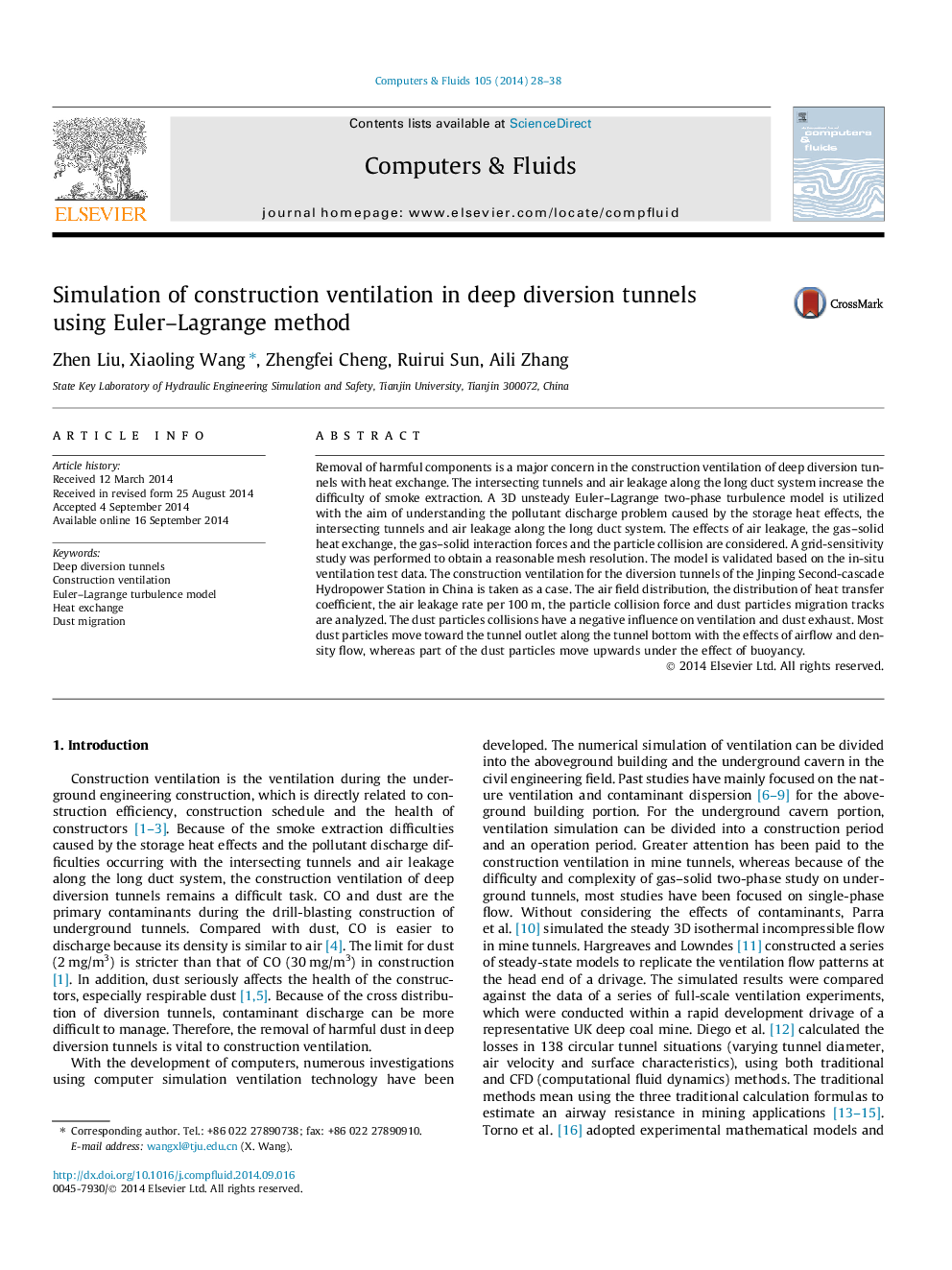| کد مقاله | کد نشریه | سال انتشار | مقاله انگلیسی | نسخه تمام متن |
|---|---|---|---|---|
| 761748 | 1462705 | 2014 | 11 صفحه PDF | دانلود رایگان |

• Euler–Lagrange construction ventilation simulation for deep diversion tunnels.
• Gas–solid heat exchange, particle collision and air leakage are taken into account.
• The distribution of heat transfer coefficient is discussed.
• Dust particle collisions have a negative influence on ventilation and dust exhaust.
• The model is validated based on the in-situ ventilation test data.
Removal of harmful components is a major concern in the construction ventilation of deep diversion tunnels with heat exchange. The intersecting tunnels and air leakage along the long duct system increase the difficulty of smoke extraction. A 3D unsteady Euler–Lagrange two-phase turbulence model is utilized with the aim of understanding the pollutant discharge problem caused by the storage heat effects, the intersecting tunnels and air leakage along the long duct system. The effects of air leakage, the gas–solid heat exchange, the gas–solid interaction forces and the particle collision are considered. A grid-sensitivity study was performed to obtain a reasonable mesh resolution. The model is validated based on the in-situ ventilation test data. The construction ventilation for the diversion tunnels of the Jinping Second-cascade Hydropower Station in China is taken as a case. The air field distribution, the distribution of heat transfer coefficient, the air leakage rate per 100 m, the particle collision force and dust particles migration tracks are analyzed. The dust particles collisions have a negative influence on ventilation and dust exhaust. Most dust particles move toward the tunnel outlet along the tunnel bottom with the effects of airflow and density flow, whereas part of the dust particles move upwards under the effect of buoyancy.
Journal: Computers & Fluids - Volume 105, 10 December 2014, Pages 28–38